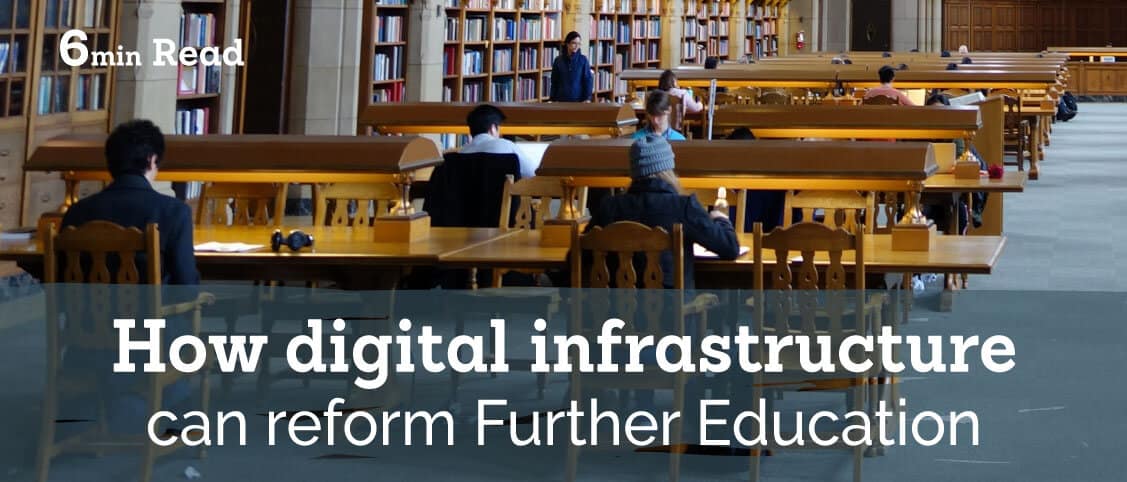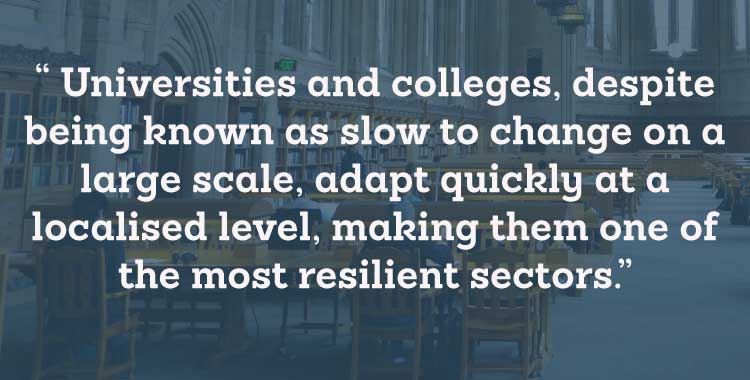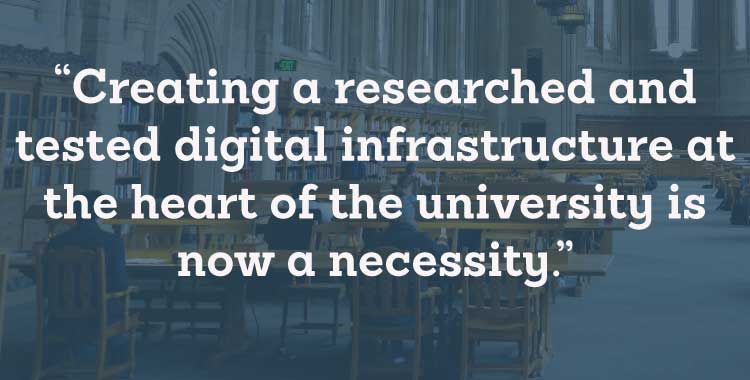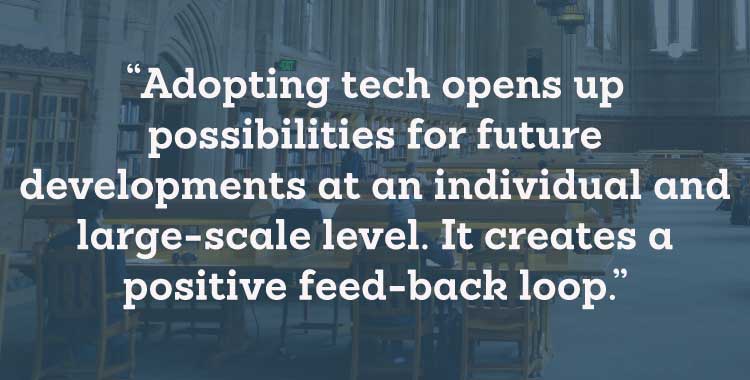How digital infrastructure can reform Further Education

Published:
Discovering new tools and aids is time consuming. Educators and administration usually don’t have time to train up on the tech that they already use, let alone new software.
At the moment, further education lacks the proper digital infrastructure to help with daily tasks.
This usually ends up holding lots of schools back from evolving alongside new tech. And, with little centralised research and use of digitisation in the education sector, colleges and institutions are left to their own devices when navigating their technological architecture.
Most universities and colleges are already users of Blackboard’s learning management system, as more than 20,000 organisations currently are, or Prosuite’s Further Education Management’s similarly vast solutions.
So you might be asking yourself, can you remember what life was like before the tools took over? However, the education sector still remains much slower to update online tools and cutting-edge digital infrastructure compared to any other sector.
Pushed further into digital transformation by the lockdown, schools with digital infrastructures in place were able to adapt in a matter of weeks. However, this was no small feat even for the digitally inclined.
By now, your university is probably reassessing how effective their technological sustainability is in the long-term. You might, therefore, be thinking about whether your University has a tenable digital infrastructure for the future.
Universities and colleges, despite being known as slow to change on a large scale, adapt quickly at a localised level, making them one of the most resilient sectors. Yet, the best of both is still achievable. So, here’s why investing in your digital infrastructure makes your university future-proof.

Never blame the tools…
There are always more effective, flexible and less expensive tools constantly being created, updated and funded. Socialnomics experts forecast that the “ed-tech industry will grow to $93.76 billion by the year 2020”.
Much of this will be cloud-based, which will allow schools an enormous capacity of users, flexibility of software, long-term cost reduction (particularly when you remove expensive annual licenses), and reduced need for technical support (especially on-site). You don’t need a team of technicians running everything out of your school.
Moving to the cloud may seem like a big and expensive change, but it’s really the opposite. Cloud-based services store and secure your data external to your school. They use significantly more complex security methods, which make them the much safer option.
Staying open minded to new technologies and services is key to knowing when to adapt and when to invest in something new.
Risky business
Reassessing digital infrastructure allows for data risk evaluation, better security and safety.
The National Cyber Security Centre outlined the top two reasons for cyber attacks on UK universities. These are 1. financial gain and 2. research theft.
Their 2019 report highlights the demand and value of Universities’ innovative research and data. Under threat are sensitive emails, personal information on staff and students, technical resources used by the university (like documentation and standards), research, and intellectual property.
Creating a researched and tested digital infrastructure at the heart of the university is now a necessity.
Without centralised and consolidated tools, breaches and attacks are unmanageable.

Learn on the job
Developments in technology is the second biggest driver of change across all industries, according to IBM’s landmark Digital Transformation study. Technology has the power to change the way we behave, at both a functional and a visionary level.
Upgrading and restructuring the digital workplace creates space to retrain staff in IT skills and learn good digital citizenship. Adopting tech opens up possibilities for future developments at an individual and large-scale level. It creates a positive feed-back loop. As the saying goes, the more we learn the less we realise we know…
Management systems, applications, cloud-based software will change the way we can work, and cut down time in administration tenfold.

Restructure, Restructure, Restructure
When you bring in commercial tech applications, universities can centralise tools and processes. For the usually non-linear, decentralized university, this restructures the organisational architecture.
Further education is structured to give departments decentralised autonomy. However, an overarching digital infrastructure allows for these areas to unite with the same goal, giving flexibility to the individual user.
But, without data-driven processes where institutional can learn and improve, universities can lag behind other sectors. Restructuring around flexible digital infrastructure allows for self-assessments and feedback for internal processes.
Next steps…
The digital transformation has already pushed further education into using online learning tools and timetable management software, among other things. Digital infrastructure should be the next logical step.
This means researching, testing, and adopting new technological tools and softwares that do the tasks with which you should no longer waste time. Everyday processes shouldn’t be painful and motivation-draining. It might be time to find a software to do it for you.